How to Eat to Lose Belly Fat in 3 Simple Stages
Do you want to lose belly fat? Jeremy Ethier is a kinesiologist fitness influencer with over 6.1 million YouTube followers and one million Instagram followers who uses his science-backed training to help people lose weight and get into great shape. In a recent viral video, he tackles belly fat. "Belly fat is really easy to gain but seems almost impossible to lose. Now, you're probably aware that your diet is the key to losing fat from this area, but you likely have no idea where to start, let alone how to keep fat loss going for long enough to get rid of the most stubborn areas," he says. "Today, I'll show you step by step in three stages how to eat to start losing fat and how to keep that going until you successfully lose all of your belly fat and for good."
You Are Likely Between 15 and 25 Percent Body Fat
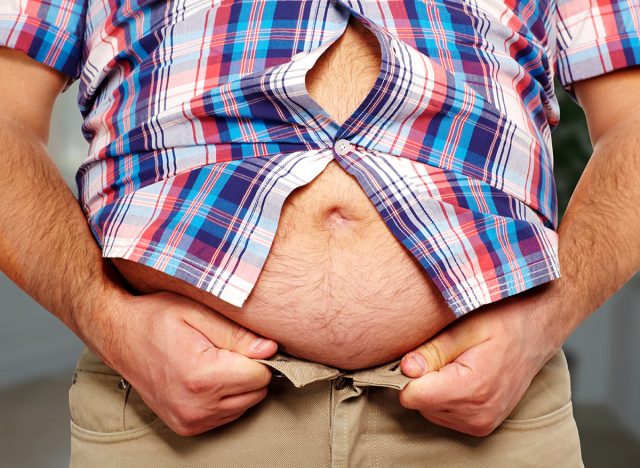
"Before we dive into the three stages, let me explain what these stages mean and why you need them in the first place," says Ethier. "So you're likely somewhere between a body fat of 15% and 25% or maybe even higher. Regardless of where you are right now, you need to lose enough fat from other areas of your body before your body starts prioritizing burning off your belly fat for energy."
The Magic Starts Happening Around 15 Percent Body Fat
For most people, this starts to really happen around 15% body fat, he maintains. "By the time you reach around 12% or 10% body fat, your belly fat will be almost completely gone." He notes that while your diet is key to achieving this, "the diet you use to get you from let's say 25% to 15% most often won't be enough to take you down to the next level of 12%. The same is true for going from 12% down to even 10%," he says. "As you get leaner and leaner, there's certain things you need to be aware of and certain changes you should make with your diet to prevent you from getting stuck and to prevent you from losing muscle."
Stage One: Kickstarting the Fat Loss Process
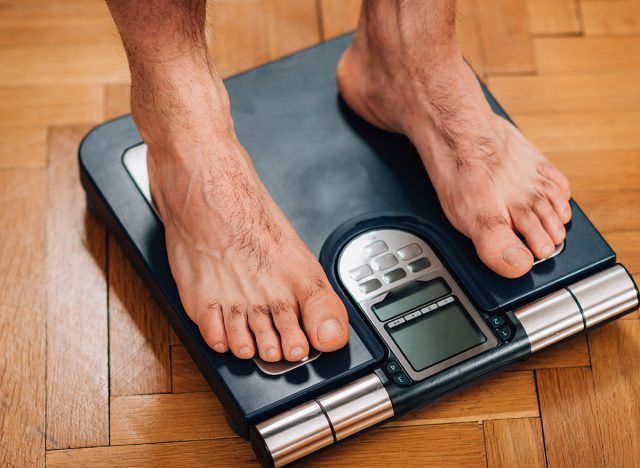
He starts with stage one. "The first stage is designed to kickstart the fat loss process and keep it going until you get to about 15% body fat. Throughout this stage, your hunger levels will be low.
Your risk of muscle loss will also be low, and physiologically it will be the easiest stage to get through," he explains.
Start by Consuming Fewer Calories Than You Burn

"The stage is actually quite simple. There's only two factors you need to focus on: calories and protein," he says. "Let's first talk about calories. You don't need to completely cut out carbs, sugar, or any of your favorite foods. All you need to do is create what's known as an energy deficit to start forcing your body to burn body fat for energy. You create this deficit by consuming fewer calories than your body burns every day."
Here's How to Find Energy Deficit
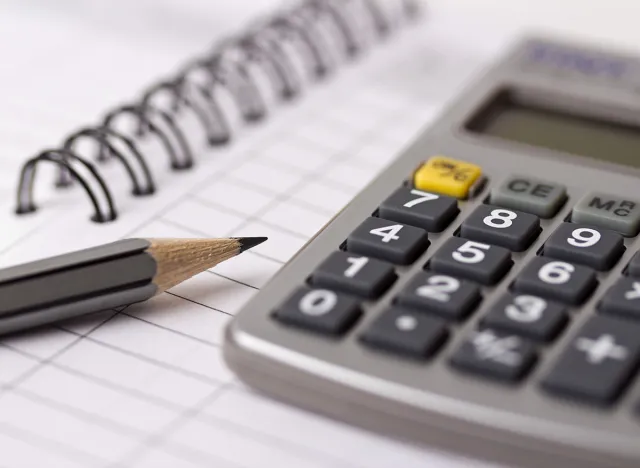
"Now, to find the appropriate energy deficit for your body, take your body weight in pounds and multiply that by anywhere from 11 to 13. If you're a taller individual, younger, or more active, go with the higher end. If you're a shorter individual, older, or less active, go with the lower end. The number you get will be a rough estimate of the amount of calories you should eat every day, but to hit your goal calorie intake, some foods are better than others," he says.
Stick to Low-Calorie Density Foods

"What I recommend is focusing on what's known as low calorie density foods. These are foods that for the amount of space they take up in your stomach will only add a relatively low amount of calories to your daily total," he says. For example, you can eat a lot more strawberries or carrots than Oreos for 200 calories. "Not only that, but since low calorie density foods tend to be unprocessed, they also tend to require more calories to burn and digest the more processed foods," he says.
This Can Make a Big Difference in Terms of Fat Loss
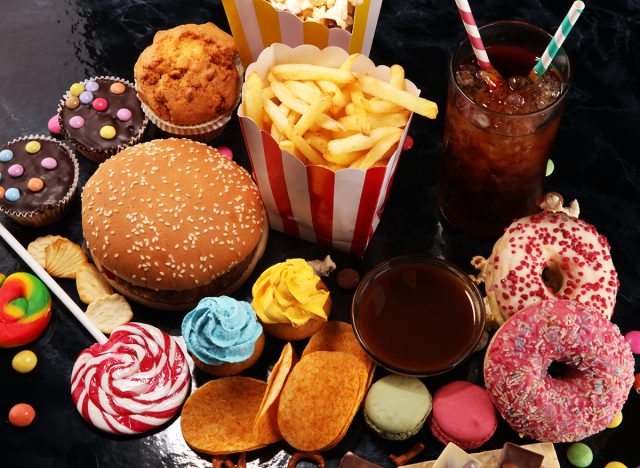
"Now, as for how much of a difference this can make for fat loss, a recent 2019 paper took 20 adults and first ran them through a diet consisting of only high calorie density processed foods. For two weeks afterwards, they switched them to a diet of low calorie density unprocessed foods for two weeks. In both conditions, they were allowed to eat as much food as they wanted. The result, the processed foods diet led to almost two pounds of weight gain. Once they switched the unprocessed diet, however, their daily calorie intake dropped by over 500 calories and they ended up losing over two pounds," he reveals.
Protein Will Help You Lose Fat Versus Muscle
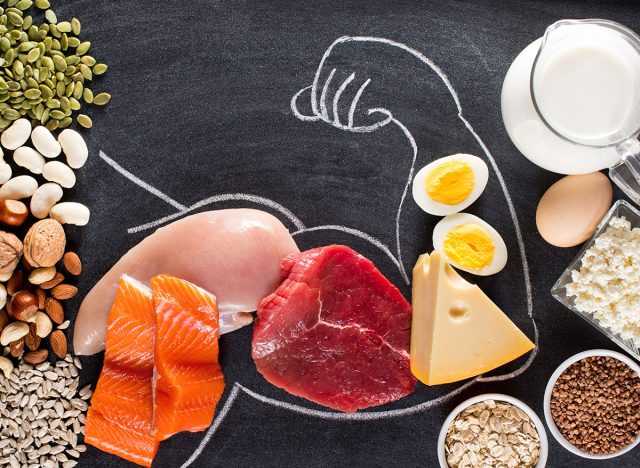
Eating fewer calories will help you lose weight, but "you want as much of that weight loss to be from fat rather than muscle," Ethier says. "This is where protein comes in. You need to start eating more of it. In fact, in studies in which subjects go on the same diet and lose the same amount of weight, the ones who eat more protein end up losing more fat and less muscle."
Here's How Much Protein You Should Eat
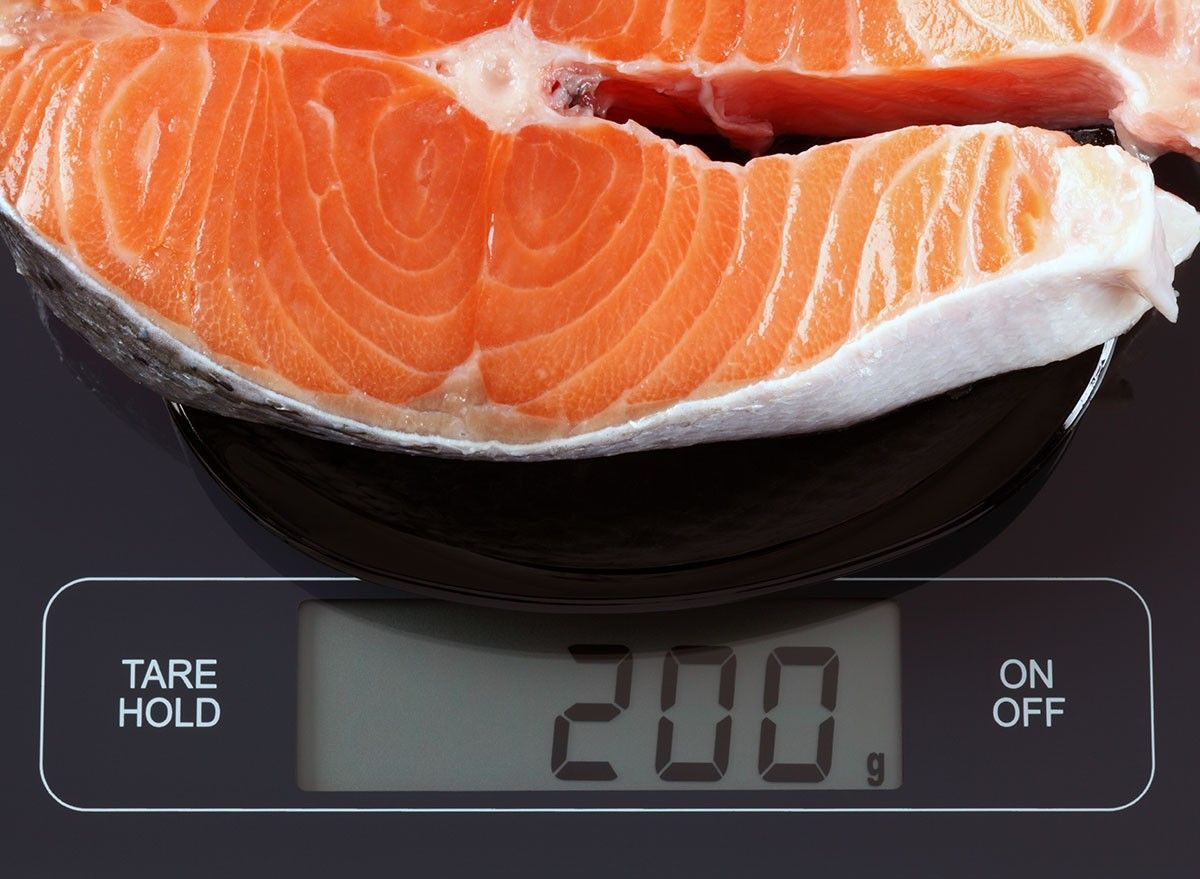
He recommends eating one gram per centimeter of your height, "so if you're 175 centimeters tall (5.74 feet), try to eat around 175 grams (6.17 ounces.) of protein per day with the rest of your calories coming from carbs and fats. Whereas if you're a relatively lighter individual or closer to 15% body fat, then you'll want to multiply your body weight and pounds by 0.8 and, at a minimum, eat that many grams of protein per day. Now, this might sound like a lot at first, but as you'll see, it's pretty easy to do if you choose the right protein sources," he says.
After You Get Down to 1%, You Are Ready for the Next Stage

"So focus only on calories and protein every day, and if you're consistent, you'll be able to get your body fat all the way down to 15%, but at this point is when you'll likely need to refine your approach to continue getting results," he says.m
Stage Two: Get More Precise with Your Approach
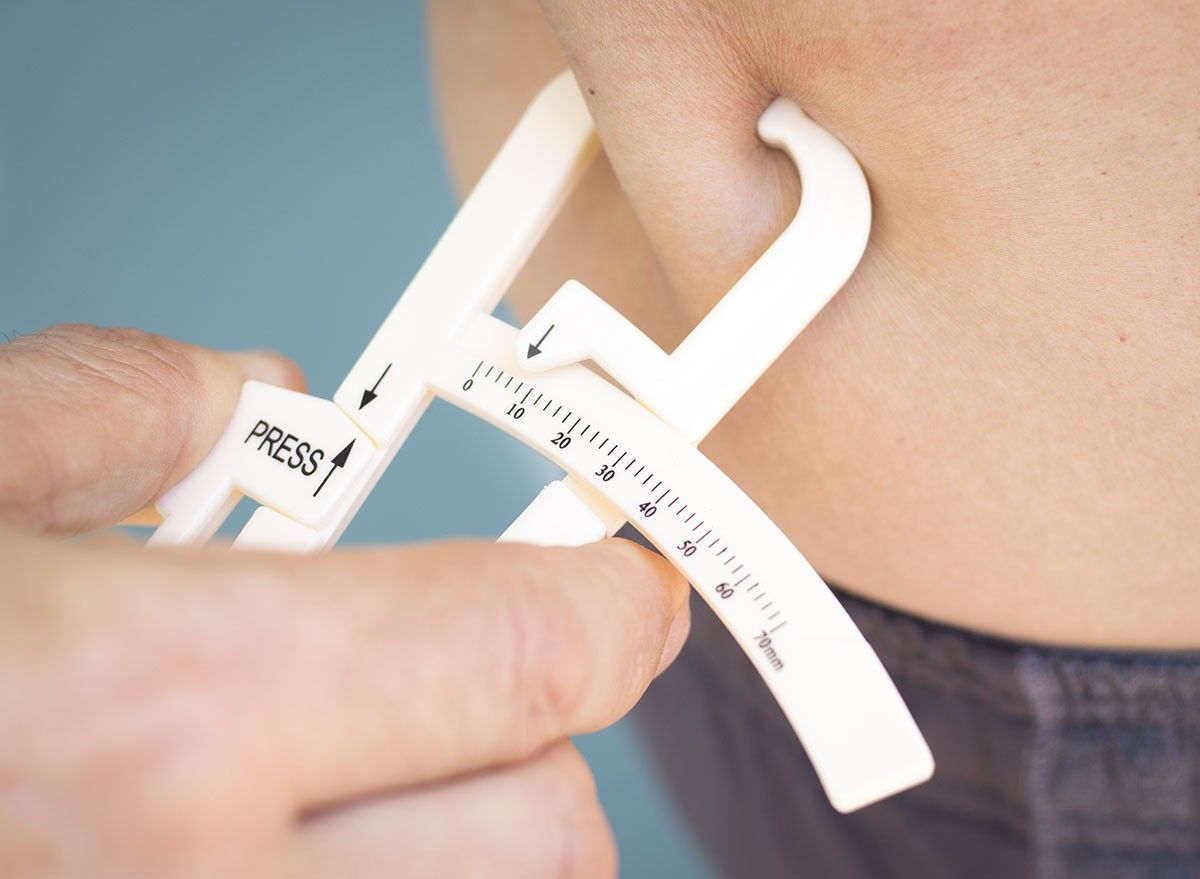
"This is where stage two comes in, which evolves going from 15% down to 12% body fat. By this point, you'll be hungrier, your fat loss will slow down, and you'll be at a slightly greater risk of muscle loss. This is where most people get stuck," says Ethier. "There are two things that will help you overcome this. First, you need to get more precise with your approach from stage one, as your body loses more and more fat, your metabolism will decrease and you'll start burning fewer calories per day. This is your body's way of protecting its remaining fat source. This means the energy deficit you used in stage one to get down to 15% body fat may no longer be enough to get you down to 12% body fat."
Track Your Daily Calorie Intake
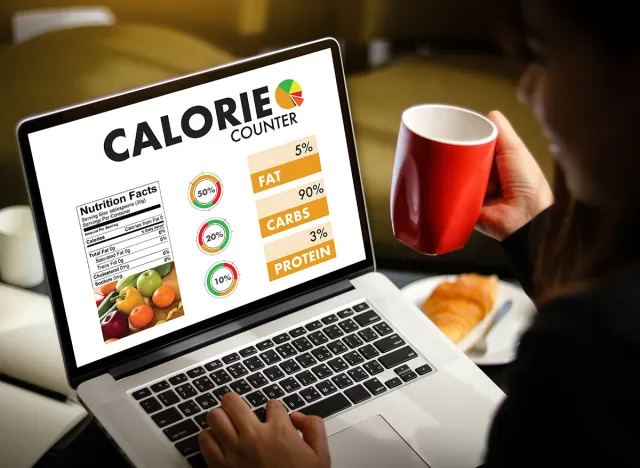
"To overcome this, if you haven't yet been doing so, you should start tracking your daily calorie intake and doing so more carefully," Ethier continues, noting that research has shown the average person will think they eat about 429 fewer calories per day on average than they actually do. "So even if just temporarily measure out your food to see how many calories you're actually consuming and ensure you're in an energy deficit," he says.
RELATED: The Number 1 Diet to Lose Body Fat, According to an Expert
Also, Start Looking at Your Carb and Fat Intake
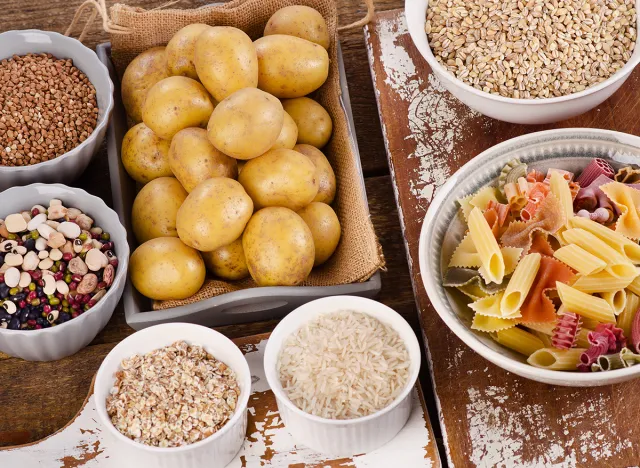
During this stage, you'll also want to start addressing your carb and fat intake. "Take a look at this list of carbs and fats. Although healthy fats are needed in your diet on a gram-per-gram basis, fats contain more than twice as many calories as carbs do. Because of this, an effective approach is to keep your protein intake high as is but lower your daily fat intake to the lower end of what's recommended for general health. This is about 20 to 25% of your daily calorie intake," he says.
Now You Can Intro More Carbs Into Your Diet

As a result, you'll now have room to introduce more carbs into your diet. "These extra carbs can not only help you better manage your hunger levels, but they'll also provide you with a boost in energy to support your daily activities and performance in the gym, helping you burn more calories every day and better maintain your muscle mass. Make these two weeks, and if you're consistent, you'll be able to get down to around 12% of body fat," he claims.
Stage Three: Discipline and Sacrifice
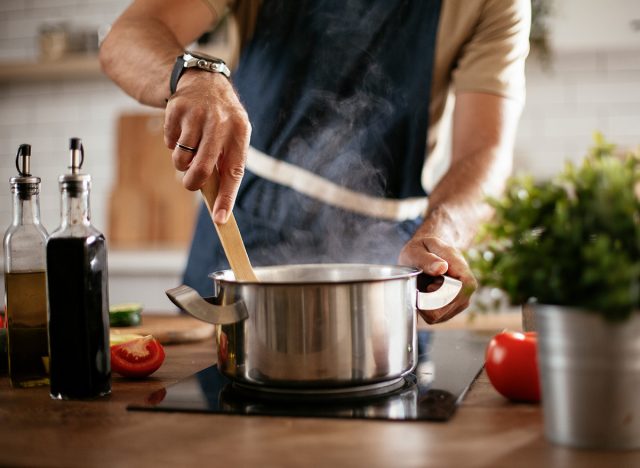
This is where stage three comes in. "This is the most difficult stage," Ethier maintains. "While consistency with what we mentioned earlier will be the key to progressing through the stage, it's going to require more discipline and sacrifice."
You Will Need to Be Eating High Volume Foods

"First off, not only will you very likely have to be accurately tracking your calories every day, you'll also want to ensure your daily meals are making the best use of the limited calories you have. At this point, your hunger levels will be the highest they've been, so most of your meals throughout the day will need to come from high-volume foods that will help you stay full for fewer calories," says Ethier.
RELATED: 5 Exercise Mistakes to Avoid During Menopause (and 5 Things to Do Instead)
You Will Need to Make Better Choices Eating Out and Might Want to Consider Quitting Drinking

"You don't have to eliminate it completely, but you will have to make wise choices when you're out and make sure that you plan in advance for big meals out or for alcohol, both of which can drastically increase your calorie intake without you even realizing," he says.
He Recommends Sticking to a Body Fat of 12 to 15%

"Lastly, ask yourself if the sacrifices are worth it. In my opinion, for most natural lifters, a body fat of around 12 to 15% is the most sustainable physique," Ethier states. "It's practical to maintain. You get the health benefits of being leaner, and you'll still look great, especially if you have a good amount of muscle on you and well-developed abs from training them while getting leaner than this. Yes, it's going to provide a bit more definition than cuts. It not only requires a lot more sacrifice, but for many people, that's when daily energy levels will start to be negatively effective."
You Can Get Down to 10% If You Really Want
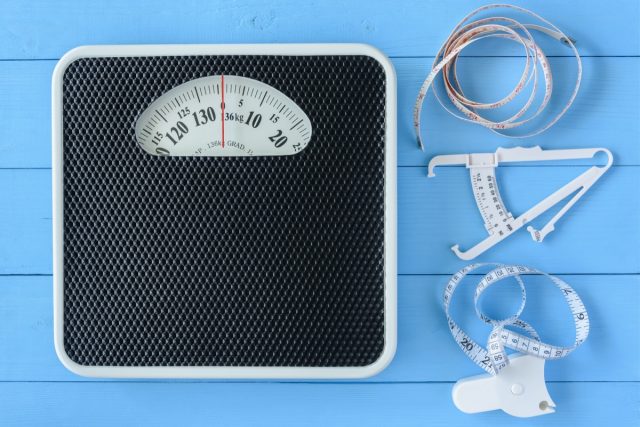
"So while you definitely can get to 10% body fat by pushing through with what you've learned, at least consider hanging around at a higher level of body fat first and be proud of how far you've come and realize that the extra push just may not be worth it, especially if you can't maintain it overall, guys, the strategy when it comes to your nutrition is actually quite simple," he says.
RELATED: These Ultra-processed Foods May Be Shortening Your Life, According to New Study
Be Consistent

The hard part? "Staying consistent with it," Ethier concludes. "You have to be clear about what your goals are and then find what you personally enjoy and can stick to consistently in the long run." And if you enjoyed this article, take advantage of these 15 Quick Ways to Lose Body Fat Percentage in a Week.





